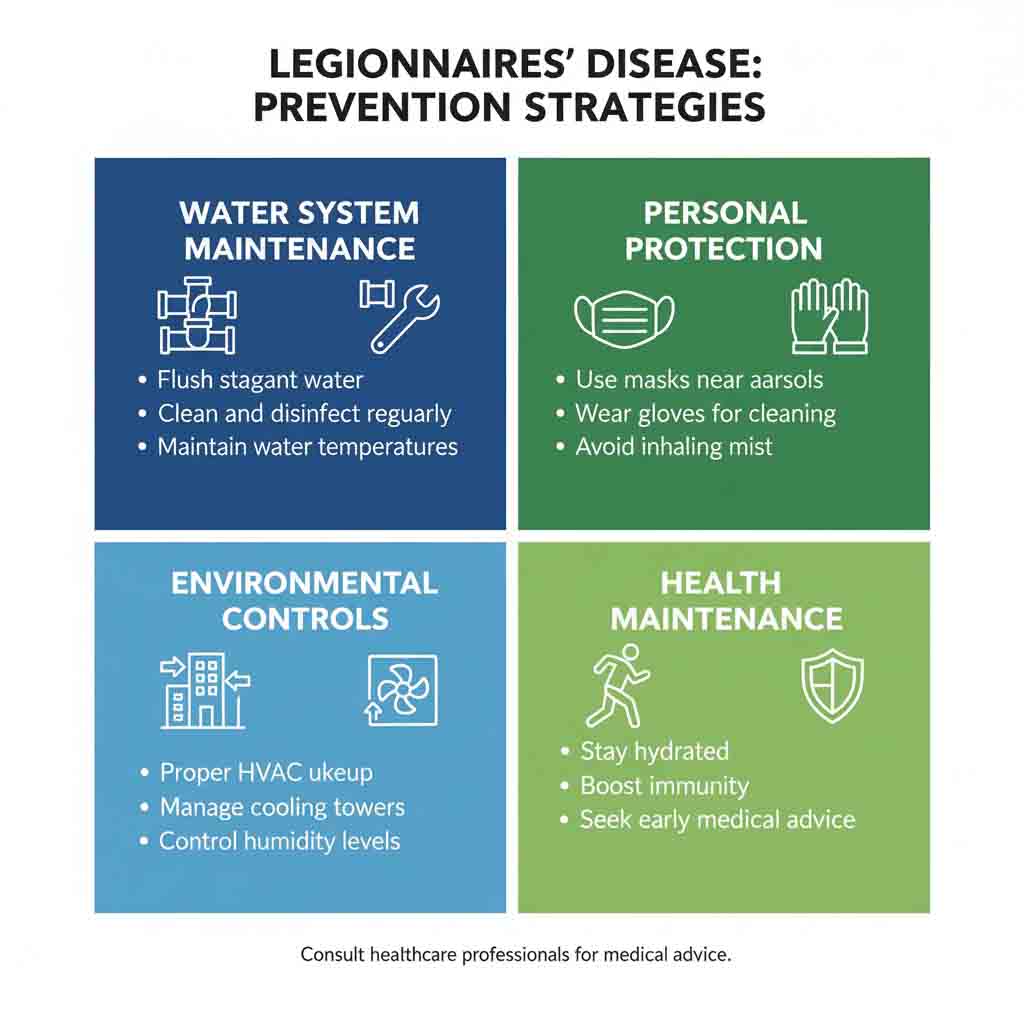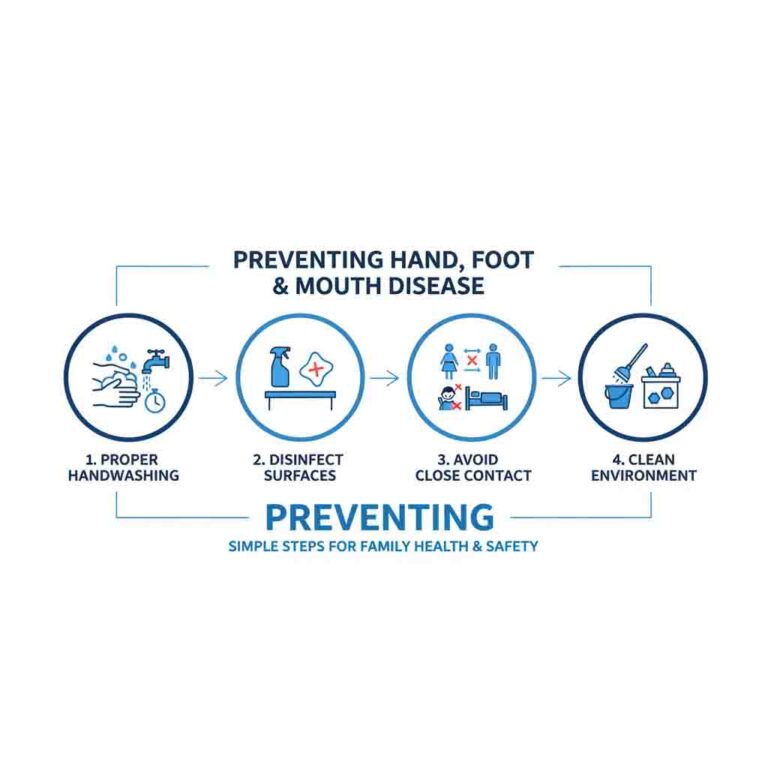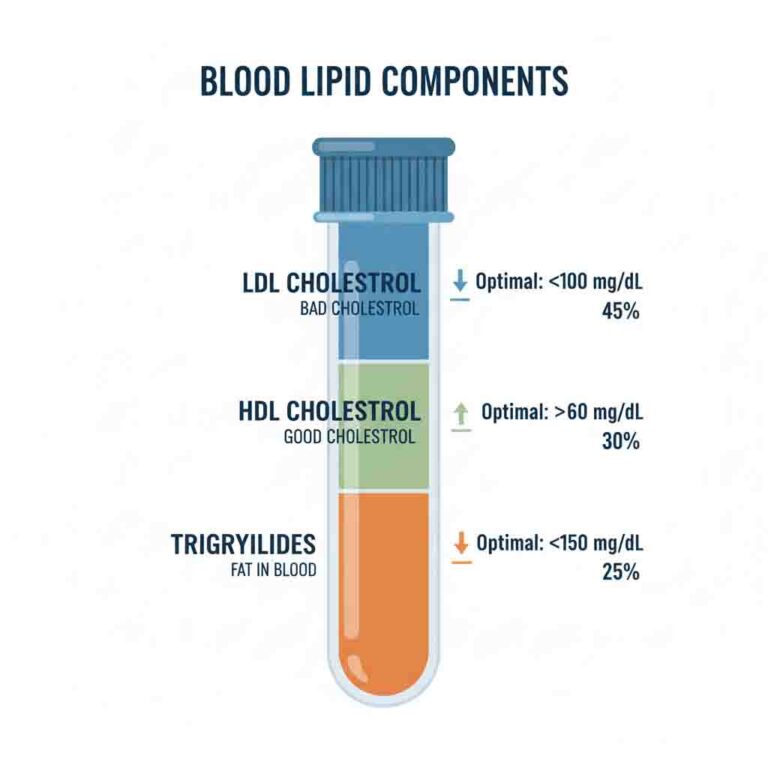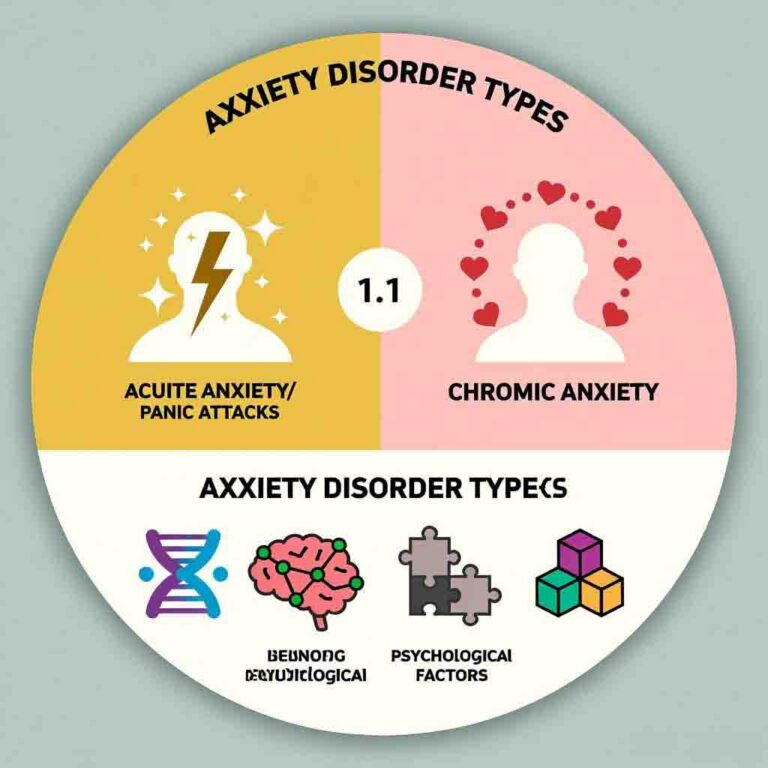Understanding Legionnaires’ Disease
Legionnaires’ disease is a type of respiratory infection caused by Legionella bacteria. This condition typically presents as a severe form of pneumonia and requires proper understanding for effective prevention and timely care.
Common Symptoms
The disease often begins with general symptoms that may progress to more specific respiratory manifestations:
-
Headache and muscle aches
-
High fever (possibly up to 104°F/40°C or higher)
-
Cough, sometimes with mucus or blood
-
Shortness of breath and chest pain
-
Gastrointestinal symptoms including nausea and diarrhea
-
Confusion or other mental changes
Symptoms typically appear 2-10 days after exposure to the bacteria, with most people developing symptoms within 5-6 days
Primary Causes and Transmission
Causative Agent:
-
Legionella bacteria, primarily Legionella pneumophila
Transmission Methods:
-
Inhalation of contaminated water droplets from sources like:
-
Showers, faucets, and hot tubs
-
Cooling towers in air conditioning systems
-
Decorative fountains and swimming pools
-
-
Aspiration of contaminated water
-
Exposure to contaminated soil during gardening
Important Note: The disease does not spread between people or through drinking contaminated water
Risk Factors
Certain factors may increase susceptibility to Legionnaires’ disease:
-
Being 50 years of age or older
-
Smoking history
-
Weakened immune system
-
Chronic lung conditions or other serious illnesses
-
Male gender
Prevention Strategies
Environmental Controls:
-
Regular maintenance of water systems in buildings
-
Proper design and maintenance of water supply systems
-
Regular cleaning and disinfection of water fixtures
Personal Precautions:
-
Avoid smoking -1
-
Maintain overall health through balanced diet and regular exercise
-
Use sterile water for respiratory medical equipment at home
-
Wear masks and gloves when handling soil or potting mix
When to Seek Medical Attention
Consult healthcare providers if you experience:
-
Symptoms suggesting Legionnaires’ disease
-
Persistent fever or respiratory symptoms
-
Concerns about possible exposure to Legionella bacteria
Early diagnosis and appropriate care are important for managing this condition effectively.
Medical Disclaimer: This information provides educational content about Legionnaires’ disease. Individual circumstances may vary, and this content should not replace professional medical advice. Always consult qualified healthcare providers for proper diagnosis and treatment recommendations.






